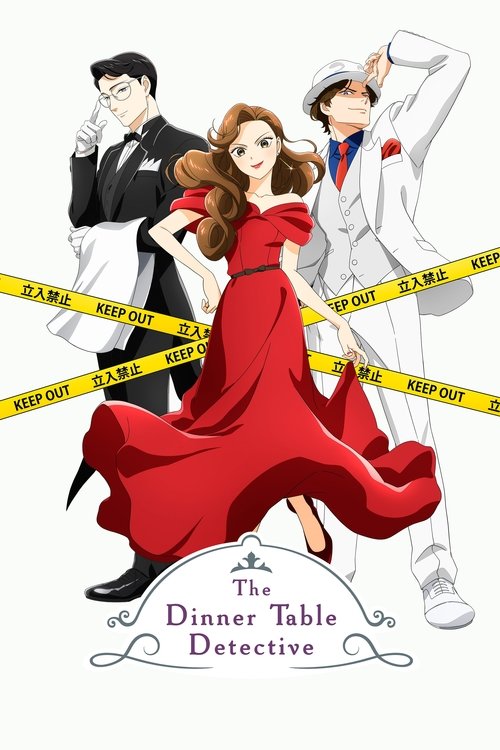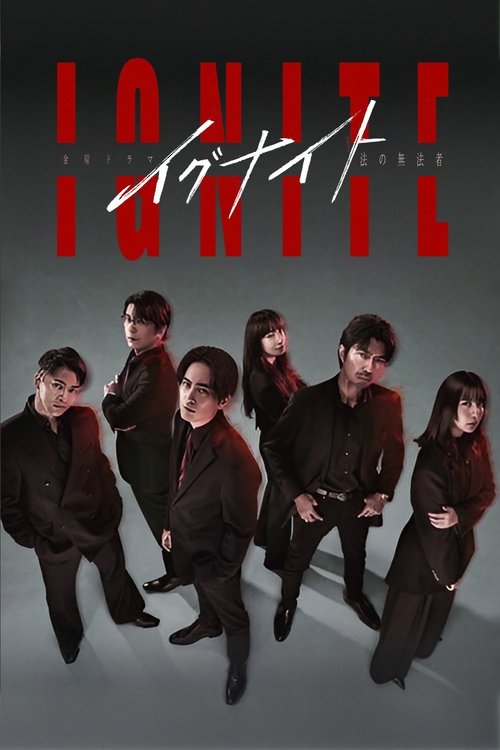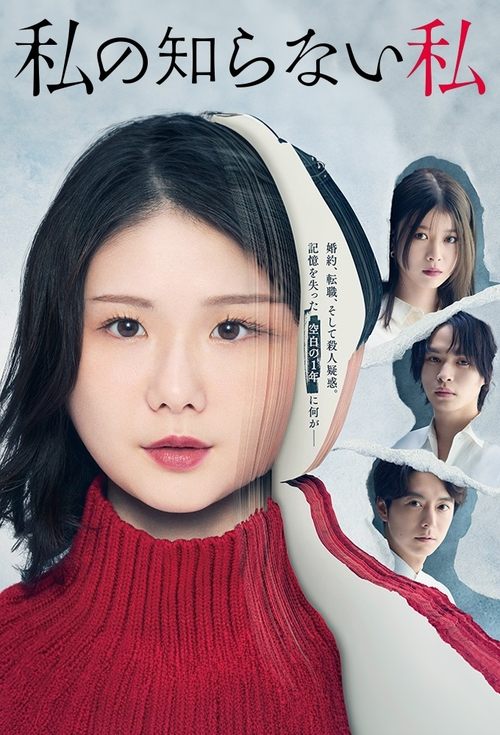
Ask Your Own Question
What is the plot?
The story begins with Reiko Houshou, a wealthy heiress of the globally renowned Houshou Group, who secretly works as a rookie detective at the Kunitachi Police Department in Tokyo. She is assigned to work under Inspector Kyoichiro Kazamatsuri, the heir to the Kazamatsuri Motors family business. Despite her privileged background, Reiko struggles with detective work and often fails to solve cases on her own.
One evening, Reiko attends a birthday party with her college friends. During the party, a violent incident occurs: one of her old classmates is attacked and later found dead. The police quickly label several of Reiko's friends as suspects because they match the description of the attacker. With only 20 minutes to solve the case, confusion reigns among the guests. Suddenly, a man appears and reveals the true culprit, clearing Reiko's friends of suspicion.
Following this, Reiko consults her newly introduced butler and driver, Kageyama. Kageyama is sharp-tongued and caustic, frequently criticizing Reiko's lack of deductive skills with biting remarks such as, "Are your eyes merely decorative, my lady?" Despite his harsh words, Kageyama is brilliant at solving mysteries and becomes an indispensable partner in Reiko's investigations.
In the next sequence, Kageyama devises a peculiar plan to catch a criminal hiding in a luxury hotel. Reiko and her friends, involved emotionally in the case, begin to realize the hidden complexities of their own feelings as the investigation unfolds. Soon after, Reiko tackles a new case involving the murder of a real estate tycoon. The victim's relatives all have suspicious motives, creating a tangled web of potential suspects.
Reiko investigates the crime scene and discovers an erased dying message, a bloody trophy, and a cord pulled from the curtains. Despite these clues, she reaches a dead end due to lack of concrete proof. At this critical moment, Kageyama steps in and brilliantly solves the mystery by thinking outside the box. He helps Reiko and Inspector Kazamatsuri trap the murderer by understanding the victim's mindset and uncovering a chain of events fueled by revenge.
Throughout the series, Reiko continues to wear elegant dresses at home and often seeks Kageyama's advice during dinner. Kageyama's sharp intellect and biting remarks contrast with Reiko's inexperience, but together they solve difficult cases that baffle others. Inspector Kazamatsuri, though overconfident and loud, works alongside Reiko, but it is Kageyama's deductions that ultimately crack the mysteries.
The series concludes with Reiko growing more confident in her detective role, guided by Kageyama's mentorship. The dynamic between the heiress detective, her caustic but loyal butler, and the heir inspector forms the core of the story, blending classic detective fiction with modern mystery elements set in Kunitachi City, Tokyo.
What is the ending?
The ending of The Dinner Table Detective (2025) centers on the desperate search for the kidnapped Miyuki, with Reiko, Kageyama, and the police working together to solve the case. Ultimately, they manage to rescue Miyuki, and Reiko finally gets to actively solve the mystery herself, marking a rare moment of success for her detective efforts. The series concludes with the resolution of this kidnapping case, wrapping up the main conflict.
The final episode unfolds with a tense and urgent atmosphere as Reiko Hosho, the heiress-turned-rookie detective, teams up with her loyal butler Kageyama and the police to find Miyuki, who has been kidnapped. The episode opens with the discovery of Miyuki's disappearance, immediately setting a frantic pace. Reiko, usually more reserved and reliant on Kageyama's deductions, takes a more active role in the investigation this time.
Scene by scene:
-
The episode begins with Reiko receiving news of Miyuki's kidnapping. The gravity of the situation is clear, and the police mobilize quickly. Reiko and Kageyama join forces with Inspector Kyoichiro Kazamatsuri, who brings additional police resources to the case.
-
As the search intensifies, Kageyama demonstrates his usual sharp intellect and calm demeanor, coordinating with the police and guiding Reiko through the clues. Unlike previous episodes where Reiko mostly listens, here she actively participates in piecing together the mystery, showing growth in her detective skills.
-
The investigation leads them through various locations, each scene filled with suspense and urgency. Reiko's elegant composure contrasts with the chaotic search, highlighting her dual life as a wealthy heiress and a detective.
-
Key moments include Kageyama's insightful deductions that narrow down the kidnapper's identity and motives. Reiko's observations complement his reasoning, and together they uncover critical evidence.
-
The climax occurs when they locate the kidnapper's hideout. A coordinated police raid ensues, with Reiko and Kageyama present. The tension peaks as they confront the kidnapper and rescue Miyuki unharmed.
-
The final scenes show the aftermath: Miyuki is safe, and the kidnapper is in custody. Reiko reflects on the case, feeling a sense of accomplishment for having contributed meaningfully to the resolution.
Regarding the fates of the main characters involved at the end:
-
Reiko Hosho emerges more confident in her detective abilities, having actively solved the case alongside Kageyama and the police. Her secret detective work remains intact, but she gains recognition for her role.
-
Kageyama, as always, remains the steadfast and brilliant butler, his loyalty and intellect crucial to the case's success. His role as Reiko's mentor and protector is reaffirmed.
-
Inspector Kyoichiro Kazamatsuri and the police force successfully apprehend the kidnapper, reinforcing their competence and dedication.
-
Miyuki, the victim, is rescued safely, her ordeal ending without physical harm.
The episode closes with a sense of closure to the kidnapping crisis, highlighting teamwork and the growth of Reiko as a detective. The series ends on this note, with no further major conflicts introduced, leaving the characters in a stable, resolved state.
Is there a post-credit scene?
The TV show The Dinner Table Detective (2025) does not have any information or mention of a post-credit scene in the available sources. Reviews and summaries focus on the show's tone, characters, and animation style but do not reference any post-credit content or scenes after the episodes end.
Therefore, it can be concluded that The Dinner Table Detective does not include a post-credit scene, or if it does, it has not been publicly noted or highlighted in reviews or official descriptions.
What is the significance of Reiko Hosho's relationship with her boss, Inspector Kyoichiro Kazamatsuri, in the development of the plot?
Reiko Hosho, the heiress turned rookie detective, works under Inspector Kyoichiro Kazamatsuri, who is her boss. Their professional relationship is central to the story, as Kazamatsuri mentors Reiko and guides her through complex investigations, influencing her growth as a detective and shaping key plot developments throughout the series.
How does the character Kageyama contribute to the mystery-solving aspects of the series?
Kageyama is a key character who assists Reiko Hosho in her detective work. Voiced by Yûki Kaji, Kageyama provides critical support in investigations, often bringing unique insights or skills that help unravel the mysteries presented at the dinner table, making him an essential part of the narrative's progression.
What role do the Yaho Rangers (Red, Blue, and Yellow) play within the story?
The Yaho Rangers--Red, Blue, and Yellow--are characters who add a distinctive dynamic to the series. They appear as a trio with specific roles that intersect with the main plot, sometimes providing comic relief or unexpected assistance in investigations, thereby enriching the story's complexity and character interactions.
How is the character Kuninyan integrated into the storyline, and what is her importance?
Kuninyan is a character voiced by Yui Horie who appears in the series as a unique figure whose interactions with Reiko and other characters add depth to the narrative. Her presence often influences key moments in the plot, contributing to character development and occasionally impacting the direction of investigations.
What are some notable plot points involving the supporting characters Ayaka Kiryuin and Kaori Miyamoto?
Ayaka Kiryuin and Kaori Miyamoto are supporting characters who appear in multiple episodes. Ayaka Kiryuin, voiced by Arisa Shida and Megan Berrisford, and Kaori Miyamoto, voiced by Mutsumi Tamura and Nicole Malcomson, are involved in subplots that intersect with the main mystery. Their personal stories and interactions with Reiko and other main characters add layers to the overall plot, often revealing critical clues or motives relevant to the central investigations.
Is this family friendly?
The TV show The Dinner Table Detective (2025) is generally a mystery anime with some comedic and dramatic elements, centered on two wealthy heirs who pursue detective work, assisted by a clever butler. It is not explicitly described as a family-friendly show, and it contains themes and scenes that might be potentially objectionable or upsetting for children or sensitive viewers.
Potentially sensitive aspects include:
-
Murder and crime scenes: The series revolves around solving murder mysteries, so it includes depictions or discussions of crime scenes and death, which may be unsettling for younger or sensitive viewers.
-
Adult themes and dialogue: Characters discuss grown-up topics such as work dynamics, marriage for love versus security, and social status, which may not be suitable or engaging for children.
-
Character behavior: Some characters display arrogance, incompetence, or caustic attitudes, and there is some comedic but potentially sharp banter, especially involving the butler and detectives.
-
Mild violence or suspense: As a mystery series involving police work, there may be suspenseful moments and mild violence related to investigations.
No explicit mention of graphic violence, strong language, or sexual content was found in the available information, but the tone and subject matter suggest it is more appropriate for teens and adults rather than young children or very sensitive audiences.
























